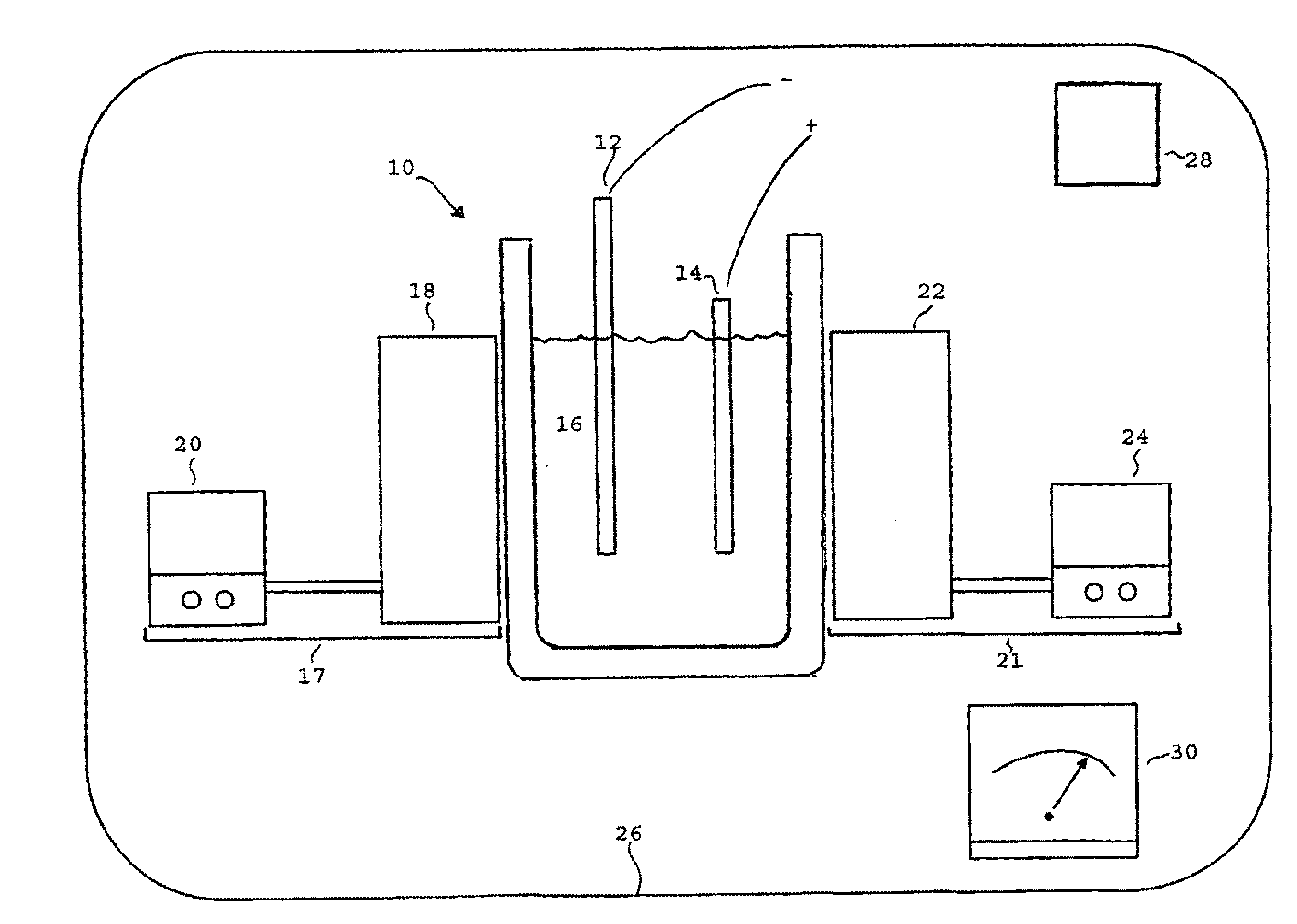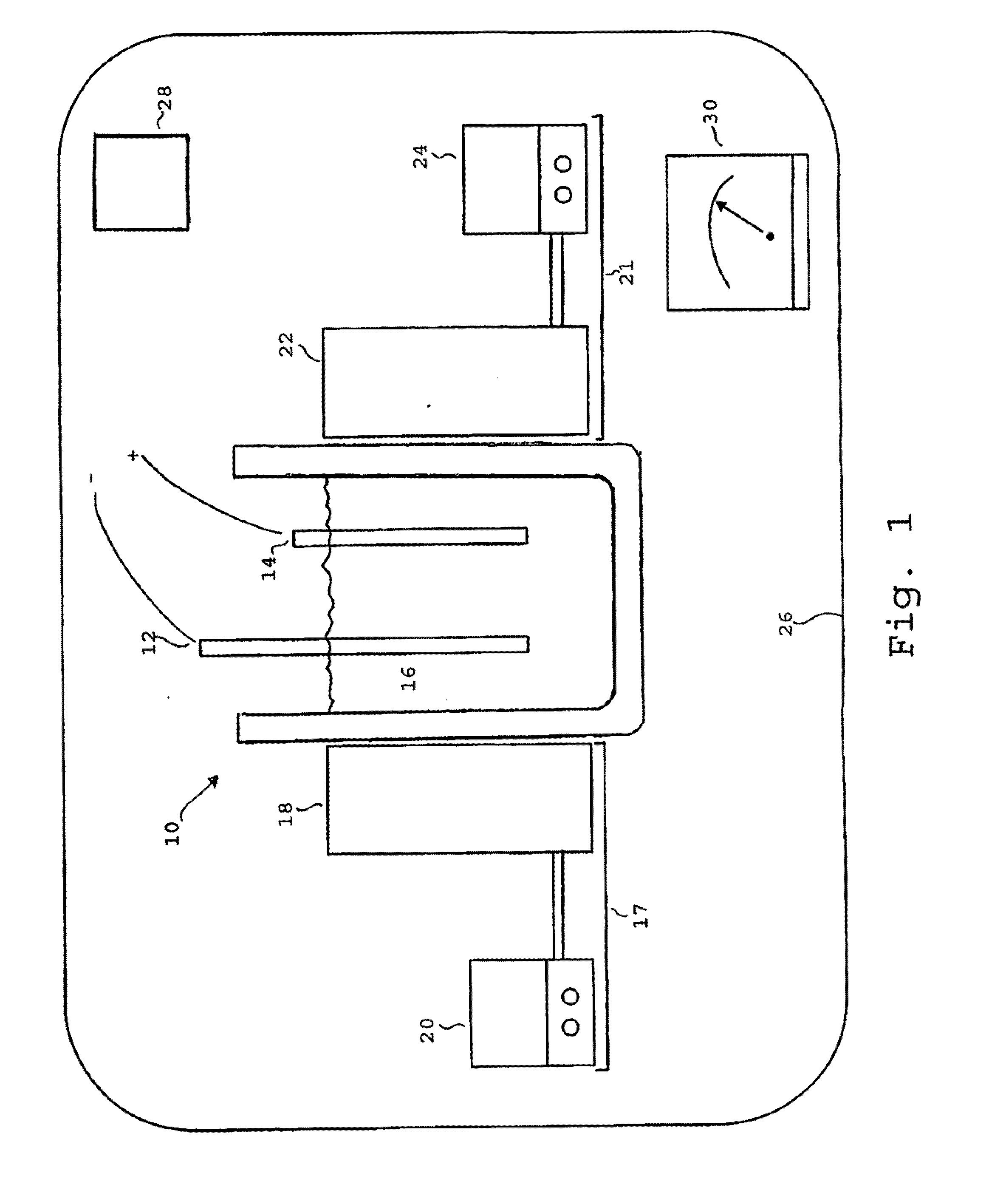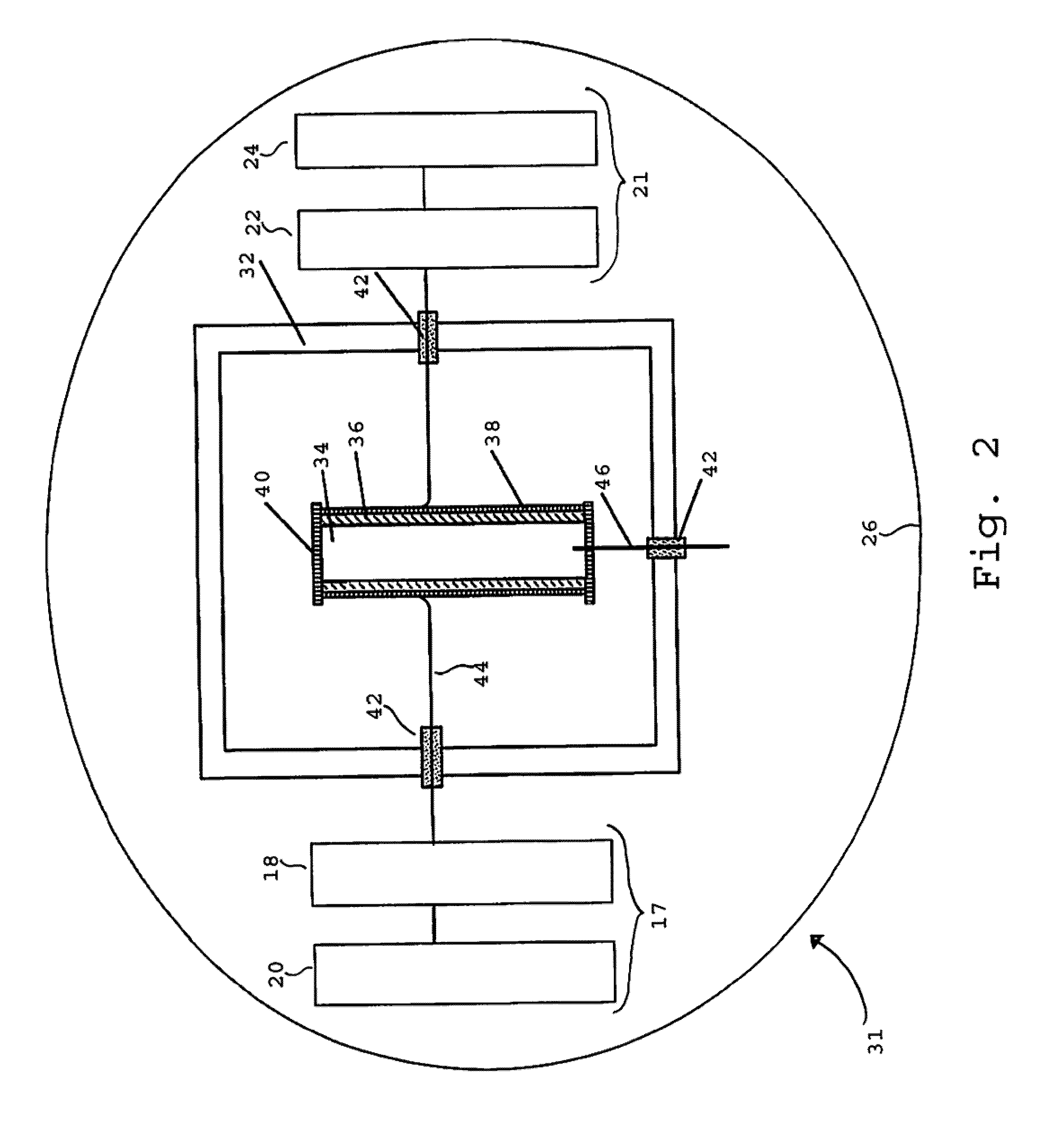Energy generation by nuclear acoustic resonance
a nuclear fusion and acoustic resonance technology, applied in nuclear reactors, nuclear engineering, greenhouse gas reduction, etc., can solve the problems of affecting the health of the populace and other living things within the environment, affecting the quality of life of the population, and the supply of fossil fuels is finite, so as to promote the conduction of electricity and reduce the effect of low energy reactions
- Summary
- Abstract
- Description
- Claims
- Application Information
AI Technical Summary
Benefits of technology
Problems solved by technology
Method used
Image
Examples
Embodiment Construction
[0016]In describing the preferred embodiments of the present invention, specific terminology is employed for the sake of clarity. The invention, however, is not intended to be limited to the specific terminology selected. It is to be understood that each specific element includes all technical equivalents that operate in a similar manner and / or accomplish similar functions.
[0017]With reference to FIG. 1, the present invention solves the problems of reliably initiating a low energy fusion reaction by providing an electrolysis cell or low energy fusion reactor 10 comprising a reaction vessel such as a Dewar flask 11, a cathode 12, and an anode 14 submerged in an electrolyte or electrolytic solution 16. The cathode is comprised of palladium and / or alloys of palladium. Platinum may be used for the anode, however other materials such as nickel may also be suitable. The electrolytic solution is comprised of a heavy water solution 16, i.e. D2O or dideuterium oxide, which includes electroly...
PUM
 Login to View More
Login to View More Abstract
Description
Claims
Application Information
 Login to View More
Login to View More - R&D
- Intellectual Property
- Life Sciences
- Materials
- Tech Scout
- Unparalleled Data Quality
- Higher Quality Content
- 60% Fewer Hallucinations
Browse by: Latest US Patents, China's latest patents, Technical Efficacy Thesaurus, Application Domain, Technology Topic, Popular Technical Reports.
© 2025 PatSnap. All rights reserved.Legal|Privacy policy|Modern Slavery Act Transparency Statement|Sitemap|About US| Contact US: help@patsnap.com



